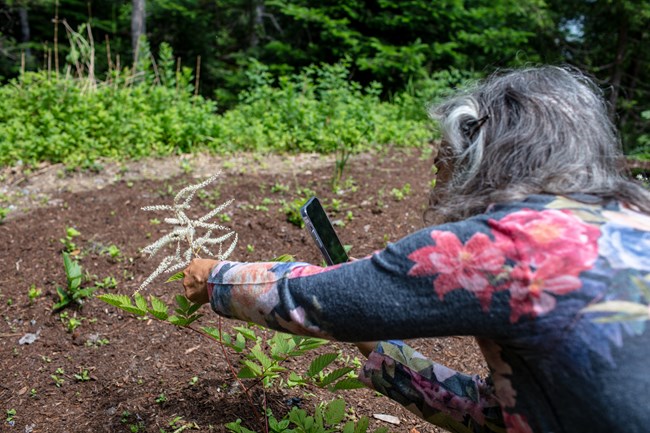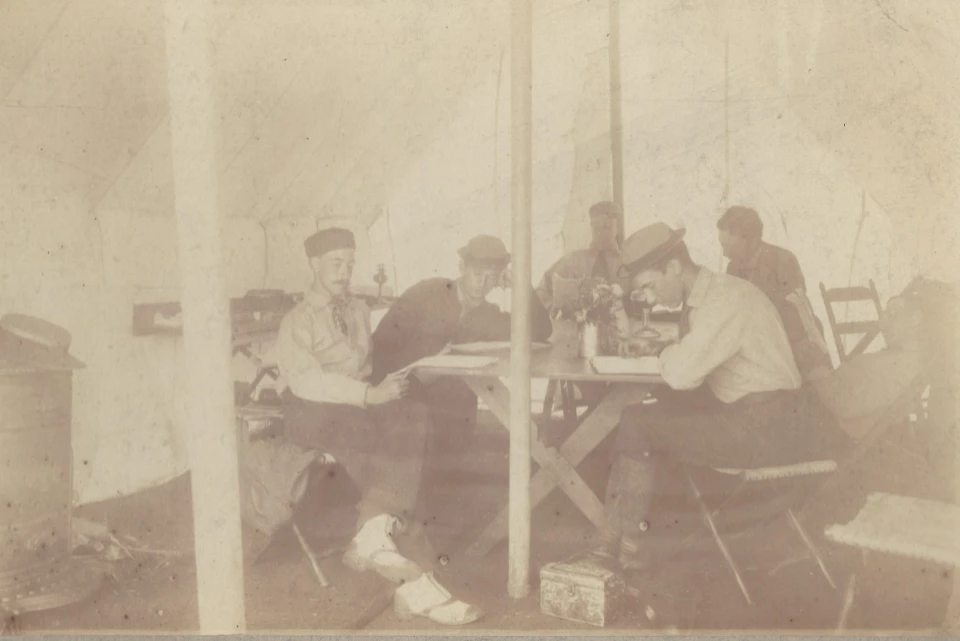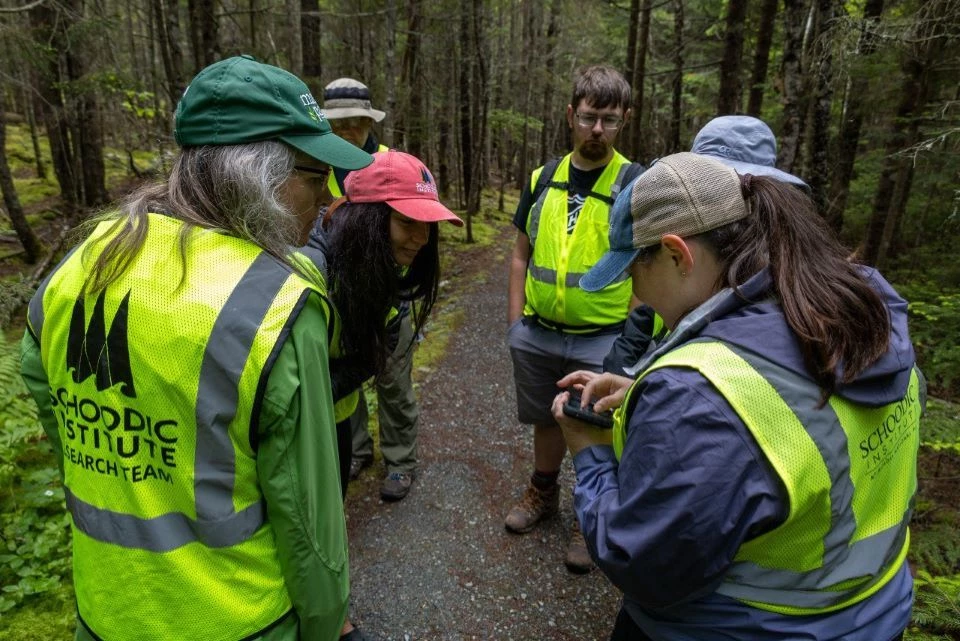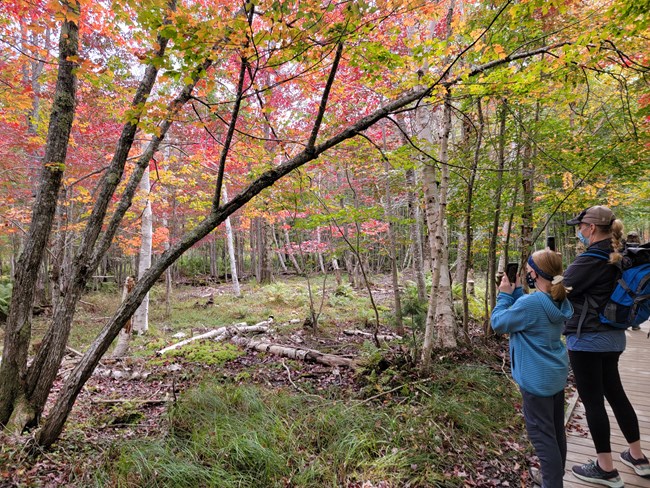
Image courtesy of Schoodic Institute
Help us learn more about how Acadia is changing, and how we are responding to change, by documenting and sharing the animals, plants, fungi, and lichens you encounter using iNaturalist and eBird. Scientists can’t be everywhere all the time. By submitting records to these platforms, you expand global databases of biodiversity while helping us protect Acadia.
Be apart of Acadia's Science Story 

Left image
Right image

Photo courtesy of Schoodic Institute How does it work?Both eBird and iNaturalist are Internet-based platforms that can be accessed from a mobile device or desktop computer. Your records automatically become accessible to park managers and are available for researchers to answer questions about our changing world. Past Citizen Science Efforts in AcadiaSince 2003, the National Park Service has hosted a series of field events to help document the biodiversity of Acadia National Park. Over the course of 24 hours during each BioBlitz event, biologists and naturalists conduct a rapid assessment of a specific group of invertebrates. While BioBlitzes cannot provide a complete inventory, they can document species occurrence, provide estimates of species richness, and identify rare and unique species. The goals of Acadia National Park's BioBlitz program are to:
More About Citizen Science in Acadia |
Last updated: March 29, 2023
